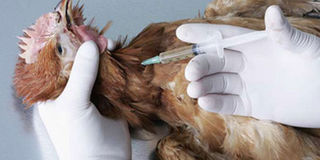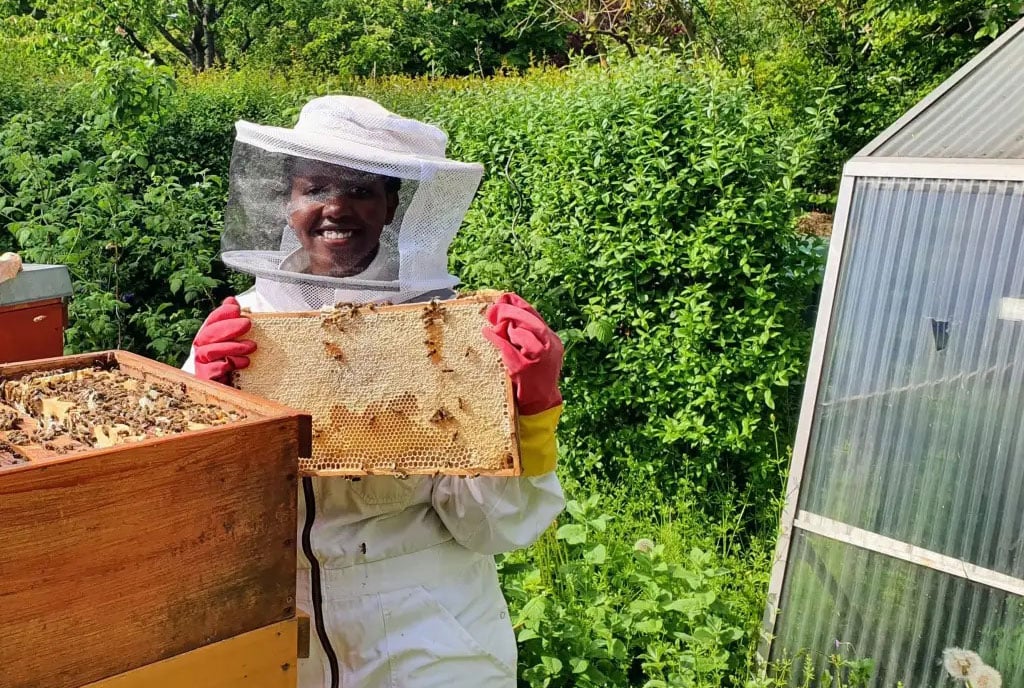Poultry health: Common diseases in chicken and how to treat them

Your birds will tend to huddle in groups or increase their level of feed consumption or reduce water intake
I have invested more than Shs10m into poultry keeping. My farm is based in Luweero District. I want to know the most common diseases in chickens and how to treat them? Rita Nakayiza
Dear Rita
As the cold rainy season sets in, your poultry production and the general well-being of your chicken will certainly be affected.
You will experience sudden shift in chicken behaviour for them to adjust to the weather changes.
Your birds will tend to huddle in groups or increase their level of feed consumption or reduce water intake. These are some of the mechanisms birds employ to generate heat and keep warm.
In most cases when the cold conditions are extreme, the birds become stressed and this affects their production and ability to withstand diseases through immunosuppression leading to reduction in egg production.
Further, the cold and wet seasons we are currently experiencing come with various pathogenic and parasitic diseases that may cause heavy losses. However, the extent of disease occurrence, morbidity and mortality rates during this season is majorly a factor of the type of management practices and vaccination status of your flock.
A healthy chicken is one that has regular access to optimal nutrient intake. While many drugs are available for improving chicken health, supplements and additives are highly effective at boosting the immune system and supporting healthy functions.
Improve poultry diets
Many common health problems can be mitigated or even avoided by improving diets and relieving elements that could contribute to poultry stress. The general signs of ill health in birds include;
The age of birds also plays a role as different age groups have unique requirements and abilities to survive the weather changes. Birds under two months of age (normally at the on-set of a rapid growth phase) and those over six months of age (in the process of becoming sexually mature) are more susceptible to infectious diseases. Common disease symptoms during the season include respiratory distress, nervousness, diarrhoea, loss of appetite, ruffled feathers, swollen face and prostration.
These observable symptoms may be associated with several diseases making it difficult to carry out a differential diagnosis to help identify the disease your flock is suffering from. Majority of poultry farmers identify these symptoms with New Castle Disease.
However, this viral disease is more prevalent during the hot, dry and windy periods, which encourage the airborne spread of the virus, in addition to the hot climatic conditions that lead to stress and predisposes the birds to the disease.
Fowl pox
It is a viral disease of poultry that can be transmitted by mosquitoes and other blood sucking insects.
The disease tends to be seasonal, occurring after mosquito breeding times.
Symptoms and signs
Difficult breathing through open mouth, sneezing, gurgling noise in the throat.
Loss of appetite, eyes and nose discharges. Death mainly due to suffocation by mucous (cheesy growth in the trachea). Mortality rate can be 100 per cent in growing chicken but lower in adult birds.
Fowl cholera
This is a contagious disease that affect all types of fowls. It is often transmitted by wild birds or other domestic birds, and spreads by contamination of the feeds or water and by oral or nasal discharges from infected birds.
The incubation period is four to nine days, but acute outbreaks can occur within two days of infection.
The symptoms and signs include
Sudden death within a few hours of showing the first signs. The respiratory form is characterised by gaping, coughing and sneezing. While in the septicaemia form there is diarrhoea with wet grey, yellow or green droppings.
In the localised form, the signs are lameness and swelling of the legs or wings joints.
In acute cases, the head and comb colour change to dark red or purple.
Marek’s disease
The disease is caused by virus which is spread from an infected chicken to a non-infected one through the air, poultry dust, by contact, sometimes by faeces. Greatest susceptibility is from 6-26 weeks of age.
Control measures
Vaccination of birds at day one (at hatchery). You are advsied to procure genetically resistant stock.
Gumboro (Infectious Bursal disease)
Acute, highly infectious disease of young chicken. Has high morbidity and mortality in affected birds
Reduces bird’s ability to develop immunity against other diseases.
Transmission
The disease is transmitted through direct contact (bird to bird), contaminated litter, faeces, air, equipment, feed, insects and wild birds.
Symptoms
Ruffled feathers, tremors, strained defecation, loss of appetite and dehydration. Reduced movement coupled with unsteady gait, white diarrhoea, prostration and death.
Coccidiosis
The disease is caused by protozoan parasite of the intestine. It leads to heavy losses in poultry particularly up to the age of 12 weeks.
Symptoms
The disease causes the chicks to lose weight and their appetite. Poultry with coccidiosis have pale combs and tend to huddle in corners. their droppings are watery and greenish/ brown in colour often containing blood.
Control
You must use Bifuran or coccidiostat in feeds at all times
Keep the litter dry and keep chicks isolated in freshly sterilised pens
Answered by Sophie Miyumo, Department of Animal Sciences, Egerton Universitys
Signs and symptoms
•Dullness, coughing, sneezing and gasping
•Nasal discharge and excessive mucous in the trachea
•Rapid breathing is accompanied by gurgling noise in the throat
•Nervous signs, characterised by twisting of neck, sometimes combined with dragging of wings and legs.
•Early loss of appetite resulting in greenish diarrhoea
•The most obvious sign of NCD is very sudden, high mortality often with a few symptoms having had time to develop.
•Chicken huddling together
•Coughing, sneezing, rapid breathing
•Discharge from mouth and nostrils
•Dullness, poor appetite, drowsing/closed eyes
•Diarrhoea/ coloured drooping- greenish, yellow, white, bloody
•Ruffled feathers
•Pale combs and wattles
•Presence of worms in the faeces
•Paralysis of legs and wings and turned or twisted necks
The common diseases are:
Newcastle Disease (NCD)
•It is a viral disease of poultry that spreads very fast via airborne droplets through sneezing of infected birds
•The virus can be carried by wild birds, through contaminated eggs, clothing, shoes and contaminated equipment.
•As mortality is often 100 per cent in young chickens, NCD is probably the most important constraint to family poultry development.
•The disease affects birds of any age but young ones are more susceptible. Mortality in older chicks is usually lower, but egg production is usually severely reduced.




